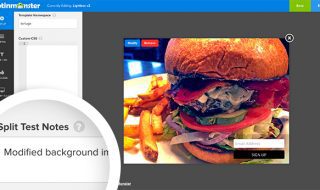
It’s crucial to establish an appealing, functional, and engaging website if you’re running a business. Hence, you need to align your web design with your marketing strategy to accomplish these goals.
Web design encompasses a website’s layout, color scheme, typography, negative space, ad banner placement, navigation, tools, and all other functional and visual aspects. Your web pages can attract more visitors and boost return on investment (ROI) when you have a well-designed website and carefully-thought digital marketing strategy.
In this article, you’ll learn how to best align your web design with your marketing strategy.
1. Optimize Web Design For SEO

Search engine optimization (SEO) lay the foundation of online brand awareness. It involves proper keyword research, link building, and informative content. Attaining good SEO can drive your business, bringing you promising benefits, such as brand boost, higher conversion rate, and steady satisfactory ROI.
When you have a good SEO strategy, more online users will find your web pages when they try to search answers that your product or service can provide. But how do you optimize your web design for SEO?
Optimizing your web design for SEO includes the following:
- Include Keywords On The Meta Tag: Search engines utilize meta tag or meta data to have an idea what the content the web page has, in which the meta description shows in snippet. The most important keywords on your content must appear in the meta description. If the meta description and the content don’t match, it will affect your SEO and user experience.
- Use Meaningful Keywords: Include one or two keywords in your URL, telling the search engine what your web page shows in search results. Never stuff URL with too many keywords to avoid spam. One clue in choosing relevant and meaningful keywords is to use one that’s in the page or post title.
Experienced web design and development professionals have vast knowledge and skills in optimizing websites for SEO. Check out https://mws.dev/ for more information.
2. Agile Web Design To Boost PPC
Pay-per-click (PPC) is a digital marketing solution that can make viral web content. Advertisers pay the publishers when online users click their ads. This online advertising strategy is effective when blended with agile web design, ensure proper PPC ad positioning in your web pages to attain positive results.
Because PPC allows search engine giants to cater to online users and advertisers, it’s crucial to make ads more search engine-friendly. The relevance of ad text and keywords are just some of the many factors that search engines consider when positioning PPC ads on search results. You can use a PPC software to help make your ads appear on the top spot of search results pages.
3. Revamping Web Design To Drive Content Marketing

Content marketing is a vital aspect to attain digital transformation. A poorly crafted content can ruin business reputation. In the same way, a well-crafted content but not accessible to online users and visible in search results is useless. But how do you attain this goal for your website?
Revamp your web design and drive your content marketing tactics by checking the following tips:
- Use Voice-Search Compatible Content Format: About 27% of the population worldwide is mobile voice searching as humans gravitate towards convenience. It means that many people use search engines through voice capabilities, such as using smartphones and other smart devices. Hence, the search marketing industry should start optimizing web pages for voice search.
- Add A Call To Action: Video content marketing is popular, allowing you to follow up with your leads. CTA is missing in many videos. So, marketers should start adding CTAs when creating videos, such as including a video host’s direct prompt or a short link to direct viewers to the landing page.
- Avoid Keyword And Link Stuffing: SEO is a vital digital marketing strategy to boost your site metrics. However, you should avoid indiscriminate placing keywords and links anywhere. It can affect your content’s overall quality and user experience. Make your content easy to read, engaging, informative, and less advertorial as much as possible. Besides, content marketing primarily aims to drive unpaid or organic traffic.
4. Don’t Miss The Site Map
A sitemap is likened to a textbook’s glossary. It lists the most important pages of a website. In this way, search engines can easily find, scan, and crawl web pages. Sitemaps increase understanding of a website structure for ease of navigation.
Extensible markup language or XML sitemaps are essential for SEO, allowing search engines to scan and crawl web pages and not just websites. But how do you optimize your XML sitemap to boost your marketing? Take a look at these site map optimization tips:
- Use Plugins: You can generate a sitemap automatically by using the right tools, like using a plugin or auditing software program with a built-in XML Sitemap generator.
- Prioritize High-Quality Web Pages: Highlight the high-quality pages on your website. Search engines tend to interpret websites with low-quality pages not worth ranking high in search results pages. Direct bots to your website’s most important pages such as ones with images and videos, unique content, and user reviews.
- Isolate Problematic Pages: It’s important to index all your web pages. However, you can’t expect that all your web pages are high-quality, so you need to isolate indexation problems to avoid hurting your website’s SEO and overall quality. Split product pages into various XML sitemaps and test each of them.
5. Seek Professional Help

Whether you need a simple informational website, e-commerce store, or complicated custom web application, a well-rounded professional can help you. You can work with an established web design and development company that specialize in digital marketing too. Taking this route is the fastest and most effective way to achieve the look you want for your website at its optimum functionality and ROI generation.
Conclusion
Aligning web design with digital marketing involves a collaborative, agile, and holistic approach. Apply the web design and marketing tips you’ve learned in this article to help you create a powerful website to represent your brand. In this way, you can generate higher traffic, leads, and sales.




